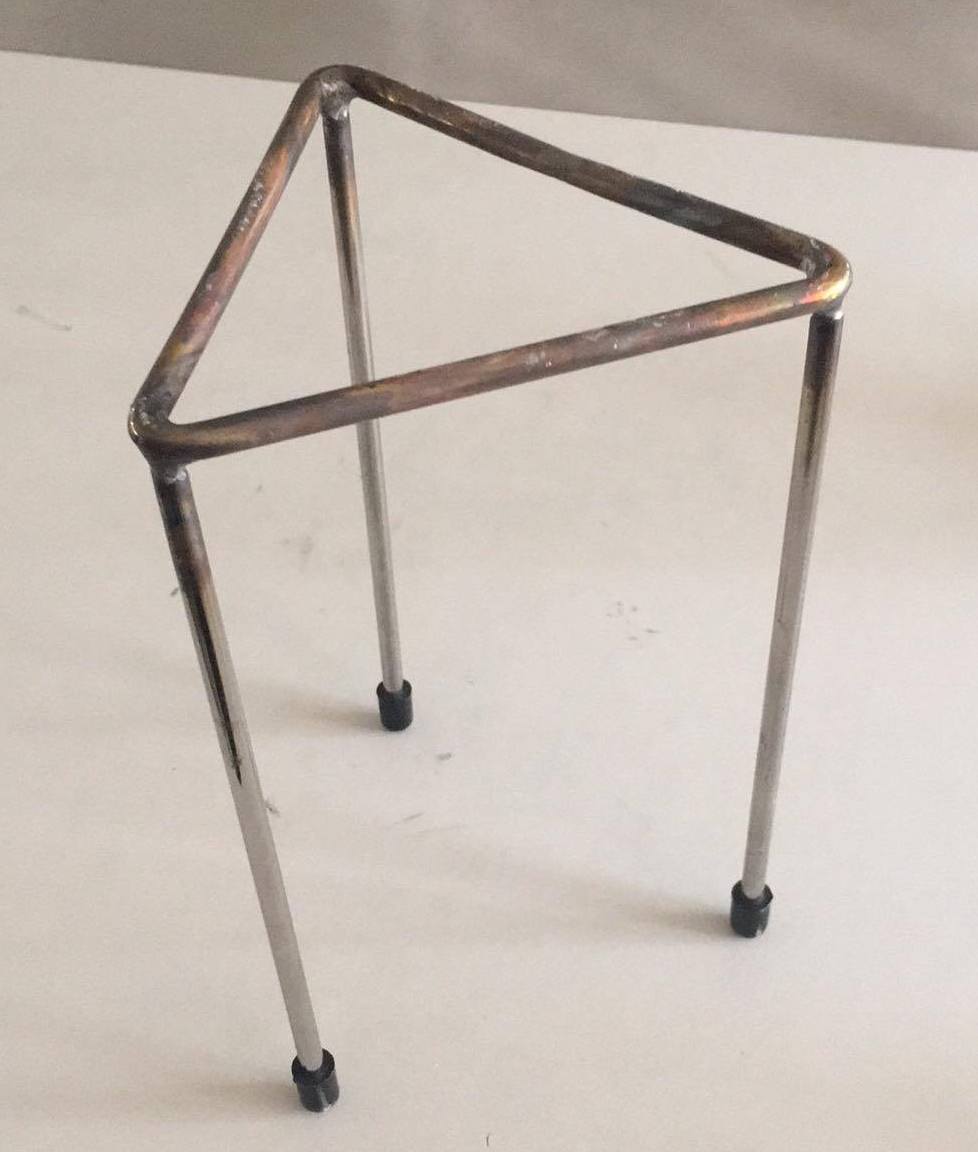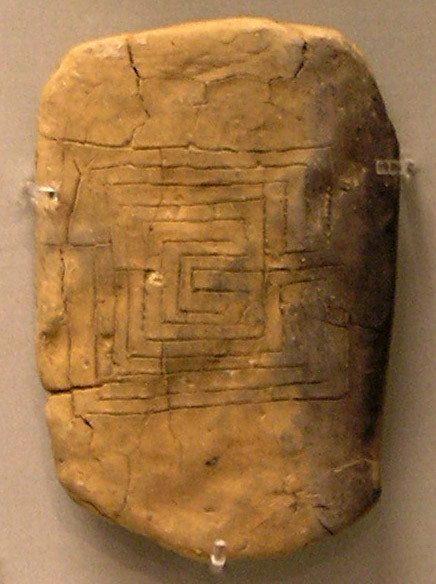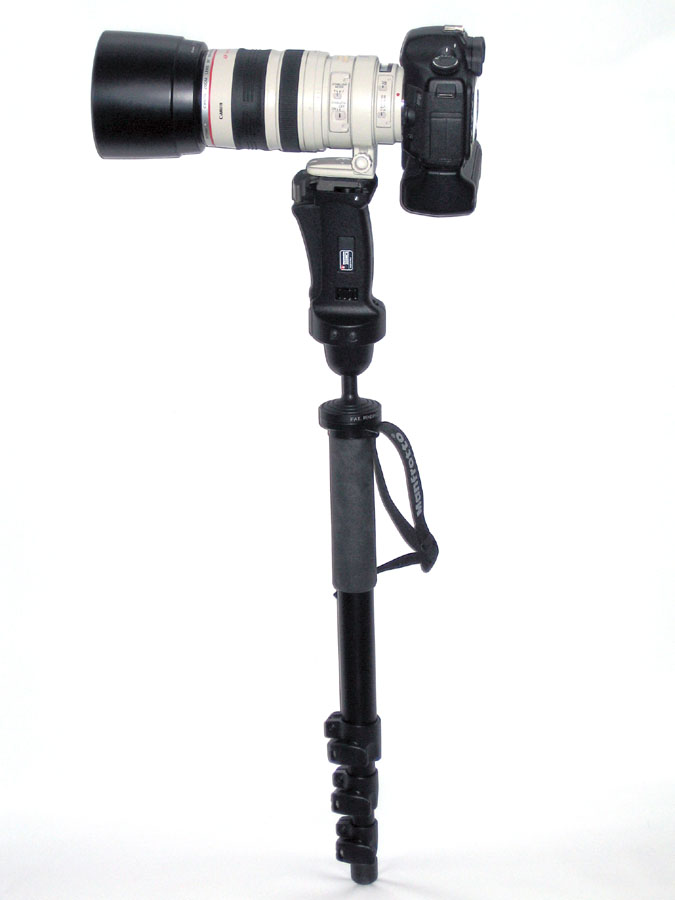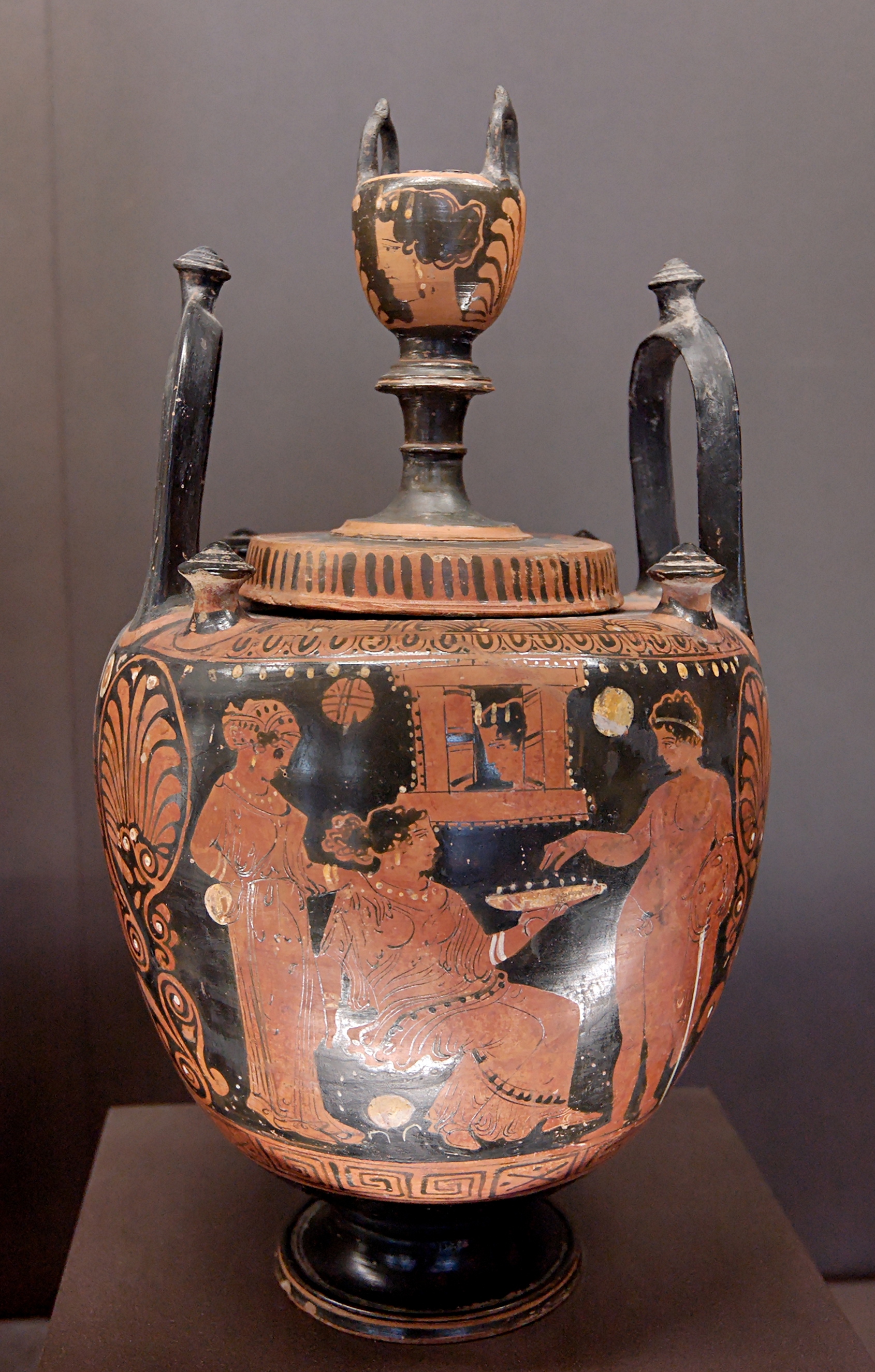|
Tripod
A tripod is a portable three-legged frame or stand, used as a platform for supporting the weight and maintaining the stability of some other object. The three-legged (triangular stance) design provides good stability against gravitational loads as well as horizontal shear forces, and better leverage for resisting tipping over due to lateral forces can be achieved by spreading the legs away from the vertical centre. Variations with one, two, and four legs are termed '' monopod'', '' bipod'', and ''quadripod'' (similar to a table). Etymology First attested in English in the early 17th century, the word ''tripod'' comes via Latin ''tripodis'' ( GEN of ''tripus''), which is the romanization of Greek (''tripous''), "three-footed" (GEN , ''tripodos''), ultimately from (''tri-''), "three times" (from , ''tria'', "three") + (''pous''), "foot". The earliest attested form of the word is the Mycenaean Greek , ''ti-ri-po'', written in Linear B syllabic script. Cultural use Many c ... [...More Info...] [...Related Items...] OR: [Wikipedia] [Google] [Baidu] |
Tripod Head
A tripod head is the part of a tripod (photography), tripod system that attaches the supported device (such as a camera) to the tripod legs, and allows the orientation of the device to be manipulated or locked down. Modular or stand-alone tripod heads can be used on a wide range of tripods, allowing the user to choose which type of head best suits their needs. Integrated heads are built directly onto the tripod legs, reducing the cost of the tripod system. The main function of any tripod head is to provide the ability to hold the attached device fixed in a specific orientation until the user needs to change its position. In the case of a photographic camera, this can help reduce vibration that would appear when using relatively slow shutter speeds while still being able to quickly recompose for another shot, or allow for very Long exposure photography, long exposures. In cinematography or Video camera, video applications, a tripod head allows the camera operator to Panning (camer ... [...More Info...] [...Related Items...] OR: [Wikipedia] [Google] [Baidu] |
PY Ta 641
PY Ta 641, sometimes known as the Tripod Tablet, is a Mycenaean Greece, Mycenaean clay tablet inscribed in Linear B, currently displayed in the National Archaeological Museum, Athens. Discovered in the so-called "Archives Complex" of the Palace of Nestor at Pylos in Messenia (ancient region), Messenia in June 1952 by the American archaeologist Carl Blegen, it has been described as "probably the most famous tablet of Linear B". The tablet catalogues tripods and other vessels used in ritual feasting. It was inscribed around 1180 BCE by a senior scribe working for the palatial administration at Pylos, known to scholarship as 'Hand 2' and possibly named ''Phugebris'' (). It is categorised as a palm-leaf tablet – a relatively small tablet used to record a single entry of information – and was probably intended to act as a short-term memory aid, perhaps before its information was transferred to a more permanent means of storage, such as papyrus. Along wi ... [...More Info...] [...Related Items...] OR: [Wikipedia] [Google] [Baidu] |
Monopod
A monopod, also called a unipod, is a single staff or pole used to help support cameras, binoculars, rifles or other precision instruments in the field. Camera and imaging use The monopod allows a still camera to be held steadier, allowing the photographer to take sharp pictures at slower shutter speeds, and/or with longer focal length lenses. In the case of video, it reduces camera shake, and therefore most of the resulting small random movements. Monopods are easier to transport and quicker to set up than conventional tripods, making them preferable for on-the-go (OTG) photography. An OTG photographer is not able to carry a heavy, bulky tripod around, and when they see a potential shot, there is no time to bother with setting up a complicated tripod. A simple monopod is easy to carry, easy to set up, and enables the photographer to take advantage of the situation they are presented with, all while providing camera support to capture a clear, sharp image. Examples of situa ... [...More Info...] [...Related Items...] OR: [Wikipedia] [Google] [Baidu] |
Lebes
The lebes (, plural ''lebetes'') is a type of ancient Greek pottery, ancient Greek cauldron, normally in bronze. It is a deep bowl with a rounded bottom. It was often supported by a sacrificial tripod. In classical times, a foot was attached and it was typically used as a cooking pot. Variants Tripod lebes The tripod lebes is characterized by two round vertical handles and by three strut-supported legs. All were separately cast then riveted to the cauldron. Artefact (archaeology), Artefactual evidence indicates the tripod lebes was not used as a mixing bowl, even long after it lost its role as a cooking pot. Lebes gamikos The lebes gamikos (pl. lebetes gamikoi), or ''nuptial lebes'', appears to have been a part of pre-wedding purification ceremonies, and was often made in pottery. It may have stood by the bride's door and was probably used in ritual sprinkling of the bride with water. Lebetes gamikoi stood on variously long or short bases and each typically was painted with a s ... [...More Info...] [...Related Items...] OR: [Wikipedia] [Google] [Baidu] |
Tripod Saddle
A weapon mount is an assembly or mechanism used to hold a weapon (typically a gun) onto a platform in order for it to function at maximum capacity. Weapon mounts can be broken down into two categories: static mounts and non-static mounts. Static mount A static mount is a non-portable weapon support component either mounted directly to the ground, on a fortification, or as part of a vehicle. Turret A gun turret protects the crew or mechanism of a weapon and at the same time lets the weapon be aimed and fired in many directions. A turret is a rotating weapon platform, strictly one that crosses the armour of whatever it is mounted on with a structure called a barbette (on ships) or basket (on tanks) and has a protective structure on top (gunhouse). If it has no gunhouse it is a barbette, if it has no barbette (i.e., it is mounted to the outside of the vehicle's armour) it is an installation. Turrets are typically used to mount machine guns, autocannons or large- calibre guns. ... [...More Info...] [...Related Items...] OR: [Wikipedia] [Google] [Baidu] |
Ding (vessel)
''Ding'' ( zh, s=鼎, p=dǐng) are prehistoric China, prehistoric and ancient China, ancient Chinese cauldrons standing upon legs with a lid and two fancy facing handles. They are one of the most important shapes used in Chinese ritual bronzes. They were made in two shapes: round vessels with three legs and rectangular ones with four, the latter often called ''fāng dǐng'' ( zh, s=方鼎, l=square ding). They were cookware, used for cooking, storage, and animal sacrifice, ritual offerings to the Chinese mythology, gods or to ancestor veneration in China, ancestors. The earliest recovered examples are ceramic tripods from the Neolithic Peiligang culture, Peiligang culture, but they are better known from the Chinese Bronze Age, particularly after the Zhou dynasty, Zhou deemphasized the ritual use of ''huangjiu'' alcohol practiced by the list of Shang emperors, Shang kings. Under the Zhou, the ding and the privilege to perform the associated rituals became symbols of authority. ... [...More Info...] [...Related Items...] OR: [Wikipedia] [Google] [Baidu] |
Linear B
Linear B is a syllabary, syllabic script that was used for writing in Mycenaean Greek, the earliest Attested language, attested form of the Greek language. The script predates the Greek alphabet by several centuries, the earliest known examples dating to around 1450 BC. It is adapted from the earlier Linear A, an undeciphered script perhaps used for writing the Minoan language, as is the later Cypriot syllabary, which also recorded Greek. Linear B, found mainly in the Minoan palace, palace archives at Knossos, Kydonia, Pylos, Thebes, Greece, Thebes and Mycenae, disappeared with the fall of Mycenaean Greece, Mycenaean civilization during the Late Bronze Age collapse. The succeeding period, known as the Greek Dark Ages, provides no evidence of the use of writing. Linear B was deciphered in 1952 by English architect and self-taught linguist Michael Ventris based on the research of American classicist Alice Kober. It is the only Bronze Age Aegean script to have been deciphered, w ... [...More Info...] [...Related Items...] OR: [Wikipedia] [Google] [Baidu] |
Mycenaean Greek
Mycenaean Greek is the earliest attested form of the Greek language. It was spoken on the Greek mainland and Crete in Mycenaean Greece (16th to 12th centuries BC). The language is preserved in inscriptions in Linear B, a script first attested on Crete before the 14th century BC. Most inscriptions are on clay tablets found in Knossos, in central Crete, as well as in Pylos, in the southwest of the Peloponnese. Other tablets have been found at Mycenae itself, Tiryns and Thebes and at Chania, in Western Crete. The language is named after Mycenae, one of the major centres of Mycenaean Greece. The tablets long remained undeciphered, and many languages were suggested for them, until Michael Ventris, building on the extensive work of Alice Kober, deciphered the script in 1952. The texts on the tablets are mostly lists and inventories. No prose narrative survives, much less myth or poetry. Still, much may be gleaned from these records about the people who produced them and ab ... [...More Info...] [...Related Items...] OR: [Wikipedia] [Google] [Baidu] |
Cishan Culture
The Cishan culture (6500–5000 BC) was a Neolithic culture in northern China, on the eastern foothills of the Taihang Mountains. The Cishan culture was based on the farming of broomcorn millet, the cultivation of which on one site has been dated back 10,000 years. The people at Cishan also began to cultivate foxtail millet around 8700 years ago. However, these early dates have been questioned by some archaeologists due to sampling issues and lack of systematic surveying. Common artifacts from the Cishan culture include stone grinders, stone sickles and tripod pottery. The sickle blades feature fairly uniform serrations, which made the harvesting of grain easier. Cord markings, used as decorations on the pottery, was more common compared to neighboring cultures. Also, the Cishan potters created a broader variety of pottery forms such as basins, pot supports, serving stands, and drinking cups. Since the culture shared many similarities with its southern neighbor, the Peilig ... [...More Info...] [...Related Items...] OR: [Wikipedia] [Google] [Baidu] |
Altazimuth Mount
An altazimuth mount or alt-azimuth mount is a simple two- axis mount for supporting and rotating an instrument about two perpendicular axes – one vertical and the other horizontal. Rotation about the vertical axis varies the azimuth (compass bearing) of the pointing direction of the instrument. Rotation about the horizontal axis varies the altitude angle (angle of elevation) of the pointing direction. These mounts are used, for example, with telescopes, cameras, radio antennas, heliostat mirrors, solar panels, and guns and similar weapons. Several names are given to this kind of mount, including altitude-azimuth, azimuth-elevation and various abbreviations thereof. A gun turret is essentially an alt-azimuth mount for a gun, and a standard camera tripod is an alt-azimuth mount as well. Astronomical telescope altazimuth mounts When used as an astronomical telescope mount, the biggest advantage of an alt-azimuth mount is the simplicity of its mechanical design. The primar ... [...More Info...] [...Related Items...] OR: [Wikipedia] [Google] [Baidu] |
Trophies
A trophy is a tangible, decorative item used to remind of a specific achievement, serving as recognition or evidence of merit. Trophies are most commonly awarded for sporting events, ranging from youth sports to professional level athletics. Additionally, trophies are presented for achievements in Academic, Arts and Entertainment, Business, Military, Professional awards, Community Service, Hunting, and Environmental accomplishments. In many contexts, especially in sports, medals (or, in North America, rings) are often given out either as the trophy or along with more traditional trophies. Originally the word trophy, derived from the Greek '' tropaion'', referred to arms, standards, other property, or human captives and body parts (e.g., headhunting) captured in battle. These war trophies commemorated the military victories of a state, army or individual combatant. In modern warfare trophy taking is discouraged, but this sense of the word is reflected in hunting trophies and ... [...More Info...] [...Related Items...] OR: [Wikipedia] [Google] [Baidu] |
Genitive
In grammar, the genitive case ( abbreviated ) is the grammatical case that marks a word, usually a noun, as modifying another word, also usually a noun—thus indicating an attributive relationship of one noun to the other noun. A genitive can also serve purposes indicating other relationships. For example, some verbs may feature arguments in the genitive case; and the genitive case may also have adverbial uses (see adverbial genitive). The genitive construction includes the genitive case, but is a broader category. Placing a modifying noun in the genitive case is one way of indicating that it is related to a head noun, in a genitive construction. However, there are other ways to indicate a genitive construction. For example, many Afroasiatic languages place the head noun (rather than the modifying noun) in the construct state. Possessive grammatical constructions, including the possessive case, may be regarded as subsets of the genitive construction. For example, the geni ... [...More Info...] [...Related Items...] OR: [Wikipedia] [Google] [Baidu] |








